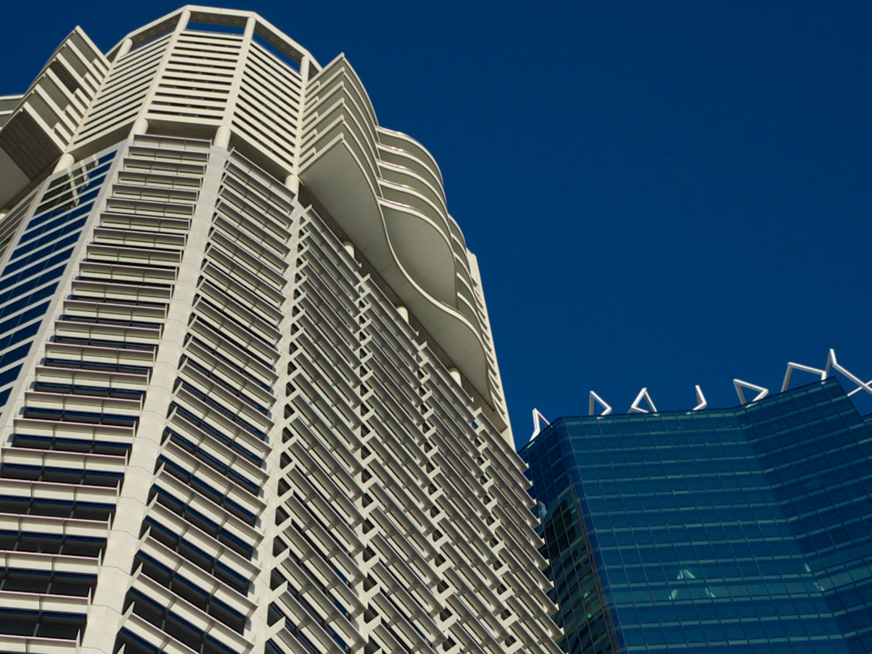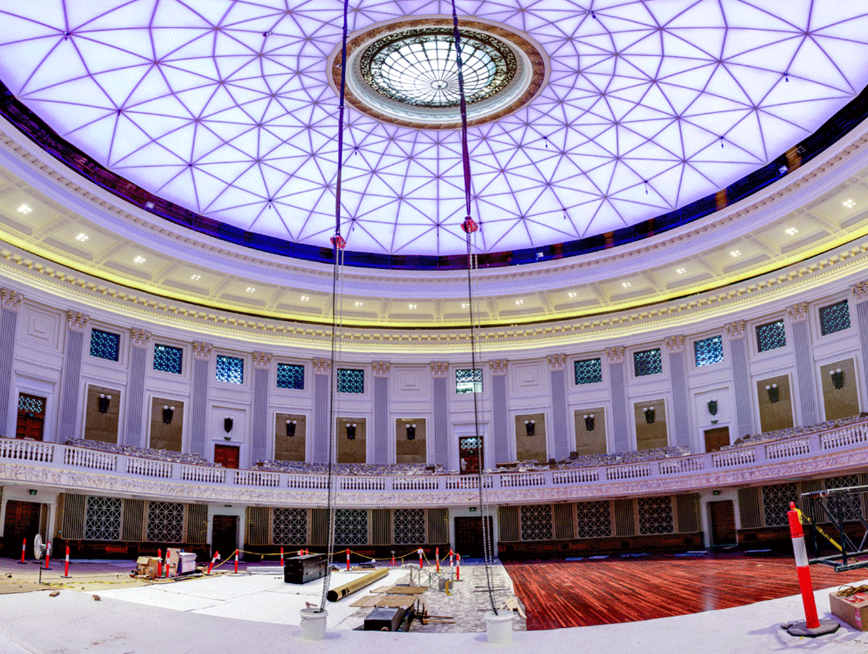Within Museum of Brisbane’s exhibition Bauhaus Now, you will discover an iconic apparatus first designed by renowned German/Australian artist, Ludwig Hirschfeld-Mack (1893 – 1965) at the Bauhaus. Hirschfeld-Mack was fascinated by the relationship between colour, light, shape and music, and their ability to be used as educational tools. He learnt many of these principles while a student at the Bauhaus school in Germany, which is considered one of the most significant institutions of the 20th century.
Hirschfeld-Mack created his first version of the Colour Light Plays apparatus in 1923. The artwork consisted of a large square frame with a set of moveable lights positioned on the back. The lights shone through the apparatus, and through a set of stencils at the front of the machine, which cast a range of colours and shapes. You could slide the stencils on the front of the apparatus, to form exciting new patterns, a process which was like creating an instant modernist painting. The original artwork was accompanied by music which, in combination with the movement of colour and light, and sometimes a dancer, evoked the abstract performances of Bauhaus theatre and early cinema. The Colour Light Plays machine was a breakthrough in the evolution of the Bauhaus because it merged art, technology, performance and education – all ideas which the school endorsed.
Bauhaus Now guest curator Professor Andrew McNamara collaborated with artist Michael Candy to recreate Hirschfeld-Mack’s original apparatus, with the support of The University of Sydney and Penelope Seidler AM. The artwork, produced by Candy, is the result of intense study of photographs which were taken of the original Colour Light Plays, and preliminary sketches by Hirschfeld-Mack held in The University of Melbourne Archives. Candy reverse-engineered the Colour Light Plays to create a modern-day interactive equivalent. His recreation of the apparatus operates in the same way as Hirschfeld-Mack’s, creating playful and dynamic visual effects. Michael Candy’s recreation, titled Farbenlichtspiele (Colour Light Plays) can be experienced in Bauhaus Now at Museum of Brisbane.











